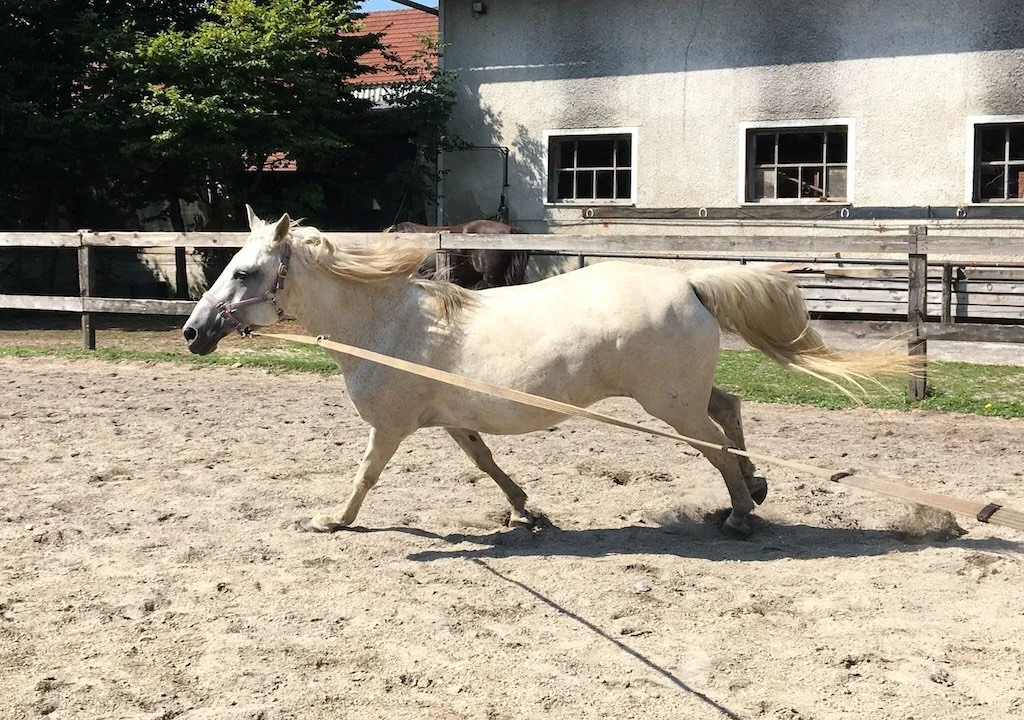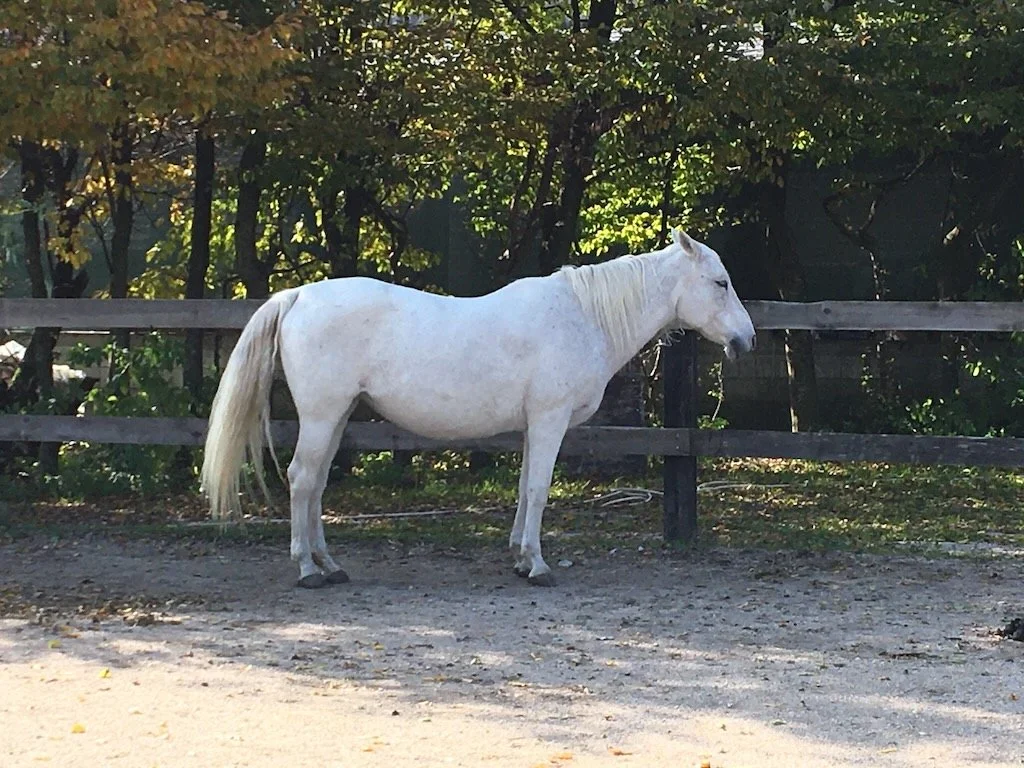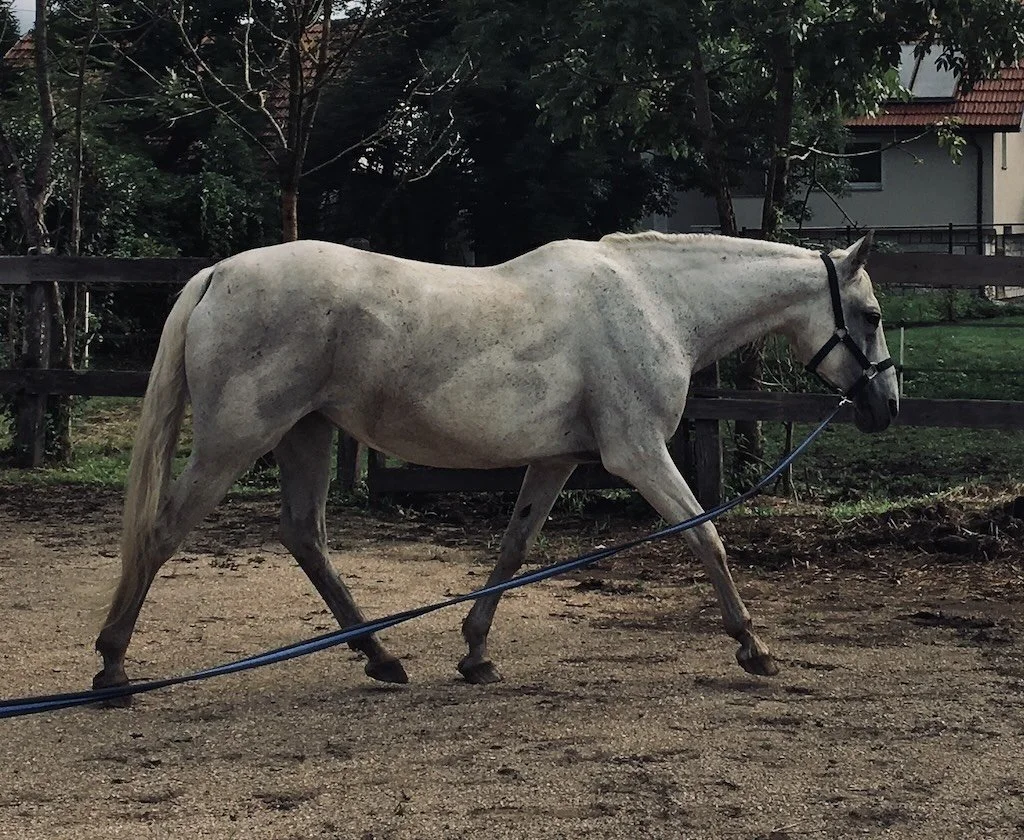The challenges of good posture – a case study
While static posture can tell us a lot about how the horse uses his body, it doesn’t tell the whole story. Here is an example of a well-functioning horse with poor static posture.
In recent years, the importance of our horse's posture has become more and more talked about. We no longer look only at how the horse moves under the rider, but also how he stands, how he eats and rests. The way the horse uses his body in life in general, plays an important role in his health. The goal of good training is not only to make the horse look nice when we ride him, but also help him use his body better when we are not riding him. Our efforts will thus be rewarded by changes in his general standing posture. For some horses, this might take a few months. For others, it takes much longer. For others still, it never quite happens.
This is Nancy.
This was how Nancy preferred to move before we started to work with her.
This is Nancy. When we started working with her, she was 21, fairly anxious and prone to bad posture, both in her free time as well as during work. She was one of those giraffe horses, who moved around with her head high, always on the lookout for potential threats. With steady, slow work, aimed towards developing better posture on the lunge and lots of walks out on the trail, she started to develop very nice posture. This took about 4 months. She started to look about 10 years younger. But funnily enough, this was only the case while she was moving.
This is still her preferred way of standing, even when she is relaxed.
When she was standing still, her posture was still terrible. Head high, back extended, ready to run away at the first sign of danger. She still had some anxiety issues. As those slowly went away too, her posture became a tiny bit better, but overall, it was still bad. If one looked at her standing still, you could probably list a hundred things that are wrong. But then, once she started to move, she was spectacular.
As soon as she starts to move, she looks 10 years younger.
What Nancy can teach us is that resting posture, while very often a prediction of the horse's movement, balance and soundness, doesn't always give us the whole picture. Some horses with terrible standing posture, can be sound and happy. This is why we need to view posture as something dynamic, not as a still photograph. An interesting thing that happened with Nancy was that the second she wasn't working regularly, her health would get worse. She'd become more stiff, more anxious and just generally not a happy camper. If you are dealing with a horse that has bad posture while standing still and good posture during movement, it makes sense to try to provide as much movement as possible. The more time they spend in good posture, the better. That said, I am not saying work that horse for three hours every day. I am saying that regular work is probably key with these types of horses. As always, with horses, everything will depend on the individual. There is no one-size-fits-all approach to training and caring for horses. And while standing posture can be a big predictor of function, it is not always the case.



